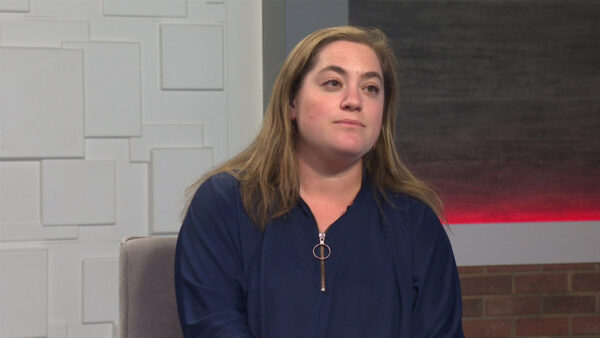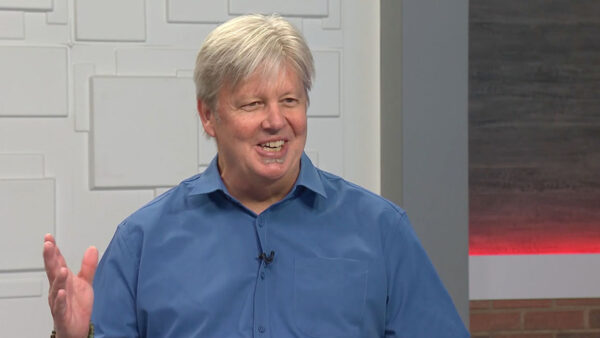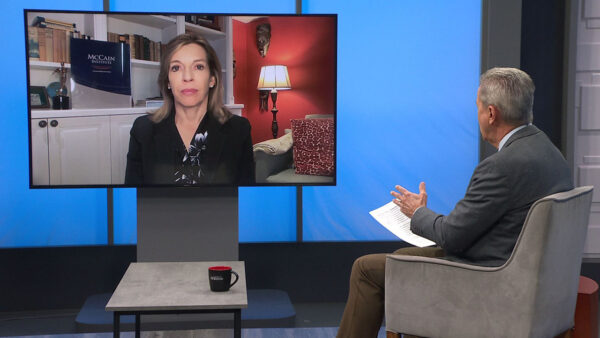The East Valley Partnership is a coalition of leaders from the business, educational and political worlds dedicated to the economic development and promotion of the Phoenix area’s East Valley. Roc Arnett, president and CEO of the partnership for the past 13 years, is retiring. He’ll discuss his role in helping develop the East Side during his tenure.
TED SIMONS: Roc Arnett is the president and CEO of the East Valley Partnership, a coalition of community leaders dedicated to promoting and developing the valley's ever-burgeoning southeast side. Roc Arnett joins us now to explain why he's retiring after 13 years at the helm of the East Valley Partnership. Good to have you here. Thanks for being here.
ROC ARNETT: Thank you very much for the invitation. How delightful.
TED SIMONS: Well, why are you stepping down? 13 years. Things are going pretty strong right now.
ROC ARNETT: Well, if you take a look, I am a little aged and have got a little years under my belt. I've been doing work for over 50 years in my career. I sold insurance for 38 years and had an opportunity to jump into this and did it for the last 13. And I think it's time that I move on and do some other things and help put the partnership in a position to take itself to the next level.
TED SIMONS: What is the East Valley Partnership?
ROC ARNETT: Oh, my goodness. What a question! The East Valley Partnership is a group, we've got about a 50-member board, we're a nonprofit. But we advocate for infrastructure, for education, workforce development, aviation aerospace, the superstition vistas, which is a big space of state trust land at the far east. All for advocacy of business and quality of life in the east valley. And I'm kind of a professional cheerleader. Had you not noticed?
TED SIMONS: With that in mind, as a cheerleader and you're looking out on the crowds and you're hearing what they're saying, what is the perception do you think of the east valley and how has that changed?
ROC ARNETT: Good question. It's been a fun transition. It used to be that there were the auto mall wars and the cities would severely compete to the point that they were really hurting each other. The last five, six, seven years, the cities have come to the point where they still compete, don't get me wrong but they do it now in a fashion and a manner that they are more respectful for each other and they do it in a manner they don't drive the price up. What's happened is Michael Crow, the president of ASU as you know, he tells us the east valley doesn't know all the assets that are there. That we don't realize our full potential and so he's kind of helped us move forward with that kind of initiative. And there are some phenomenal opportunities in the east valley.
TED SIMONS: So I'm a business, I'm in Iowa or Ohio or something like this and I'm looking at Arizona and I see you and tell me about the east valley. Why should I move my business there?
ROC ARNETT: We have in the east valley 750,000 jobs and we are a highly educated workforce. We're 4% younger than the national average and so our population is there and the jobs are there. We have 42% of all the jobs in the valley, they're in the east valley. The high-tech corridor up in Scottsdale around the airport, down around Intel, and Boeing, out at the Phoenix Mesa gateway airport. We also have 150,000 college students. When you consider ASU, polytechnic, the four community college campuses and the privates, 150,000 college students, we call that our annual renewable workforce. And we think people will salute that and want to come and be a part of that.
TED SIMONS: And yet I'm the same business owner and I have friends in Arizona and they tell me Mesa's a sleepy town, the east valley is kind of sleepy, they don't want to get out and get going. We know that has changed over the years. How did that change?
ROC ARNETT: I think there were two things that have changed. That the economy, we've had to change. Maybe more than two. Chris Brady, the city manager and Scott Smith who was the previous mayor, and now mayor Giles, those guys, those good leaders, have really worked hard to move forward. Take a look at the Apple deal. The Apple deal came together because they went and got it and they were ready to pull the plug. And that's not the sleepy kind of operation that you see anymore.
TED SIMONS: So what are you most proud of in your time with the East Valley Partnership now and what was the biggest missed opportunity?
ROC ARNETT:: Oh, missed opportunity. I won't go there. I'll tell you --
TED SIMONS: I forgot you're a cheerleader.
ROC ARNETT: We did the Superstition Vistas plan which did a 50,000-foot, 50-year master plan for 275,000 square miles of state trust land and it's been embedded into the Pinal county comprehensive general plan. We're quite proud of that and so for future long-range development, that will be an opportunity. In 2006, Mesa, Gilbert, and Queen Creek invited me to help facilitate an urban land institute services advisory panel that talked about what could, should and ought to happen in the gateway airport area. And that has kind of been a Bible for developers moving forward, like East Mark and Allegiant and others and then recently, we have changed the brand. We're now calling ourselves Phoenix east valley, because east valley could be in wherever.
TED SIMONS: That's a change because using the word Phoenix is a little touchy for some east valley leaders wasn't it?
ROC ARNETT: We had some city council members that were cranky and we finally brought them around. But if you capture the location of phx, we like to call it phs, still Phoenix, and Phoenix east valley, all of a sudden, you know where we are, and it's becoming quite a place.
TED SIMONS: Well, congratulations on quite a career. It sounds like you're not done, though. You've got some other ideas in mind. I'm sure we'll be seeing you around. Thank you so much for joining us. We appreciate it.
ROC ARNETT: Thank you for the opportunity to visit.
Roc Arnett: retiring president and CEO of East Valley Partnership























